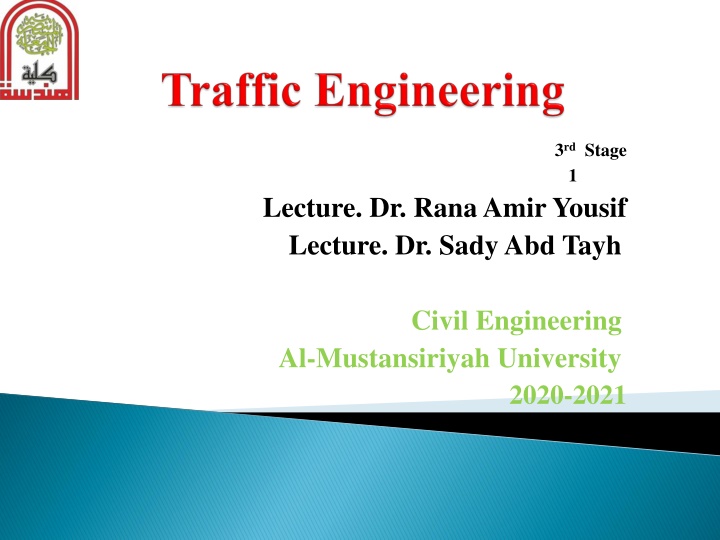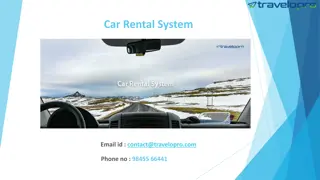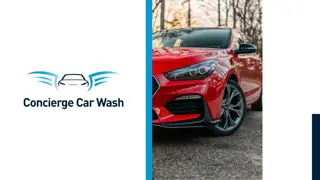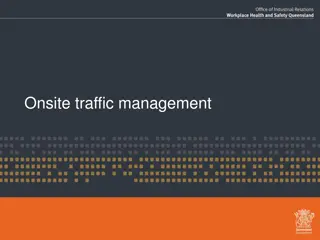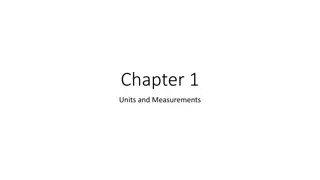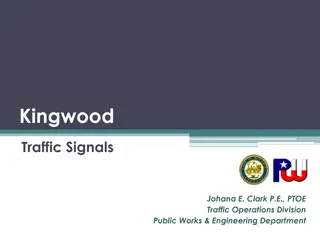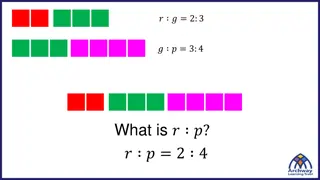Traffic Composition and Equivalent Passenger Car Units
In civil engineering, understanding traffic composition is essential for capacity estimation. Converting different vehicle classes to equivalent passenger car units aids in assessing roadway capacity accurately. This document discusses the concept of passenger car units, provides a breakdown of various vehicle classes, and demonstrates how to calculate the equivalent passenger car units for a given traffic composition. By following the examples and references provided, you can enhance your knowledge of traffic engineering principles and their practical applications.
Download Presentation

Please find below an Image/Link to download the presentation.
The content on the website is provided AS IS for your information and personal use only. It may not be sold, licensed, or shared on other websites without obtaining consent from the author.If you encounter any issues during the download, it is possible that the publisher has removed the file from their server.
You are allowed to download the files provided on this website for personal or commercial use, subject to the condition that they are used lawfully. All files are the property of their respective owners.
The content on the website is provided AS IS for your information and personal use only. It may not be sold, licensed, or shared on other websites without obtaining consent from the author.
E N D
Presentation Transcript
3rdStage 1 Lecture. Dr. RanaAmir Yousif Lecture. Dr. SadyAbd Tayh Civil Engineering Al-Mustansiriyah University 2020-2021
References: Nicholas J. Garber and Lester A. Hoel. Traffic and Highway Engineering , Fourth Edition. Yoder; E. J. and M. W. Witczak, Principles of Pavement Design , A Wiley- Interscience Publication, John Wiley & Sons Inc., U.S.A., 1975. Yaug H. Huang, Pavement Analysis and Design , Prentic Hall Inc., U.S.A., 1993. AASHTO Guide for Design of Pavement Structures 1993 , AASHTO, American Association of State Highway and Transportation Officials, U.S.A., 1993. Oglesby Clarkson H., Highway Engineering , John Wiley & Sons Inc., U.S.A., 1975.
A different vehicle classes have a wide range of static characteristics such as length, width, etc. and dynamic characteristics such as speed, acceleration, etc. It is rather difficult to estimate the traffic volume and capacity of roadway under mixed traffic flow, unless the different vehicle classes are converted to one common standard vehicle unit. It is common to consider the passenger car unit (pcu)
PCU 1 Buss ( 24 passenger) 1 Buss ( > 24 passenger) 1 Truck 1 Motorcycle 1 Bicycle Light good vehicle Heavy vehicle pcu 1.25 2-3 2 0.33 0.25 1- 1.25 3.0
For the following traffic composition Passenger car =50% Buses (25 passenger) = 5% Heavy vehicle =42% Motorcycle= 3% Determine the equivalent passenger car unit if the total number of vehicles passing is 8500.
No. of Passenger car =8500* (50/100)=4250. No. of Buses (25 passenger) = 8500* (5/100)= 425. No. of Heavy vehicle = 8500* (42/100)= 3570. No. of motorcycle= 8500* (3/100)= 255. Total No. equivalent passenger car = 4250* 1+425* 2.5+3570*3+255*0.33. Total No. equivalent 4250+1062.5+10710+84.15 = 16107. passenger car =
